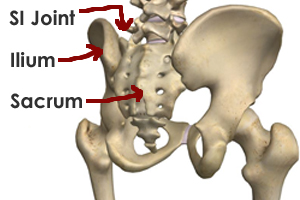Celebrity Spine
/Vince Vaughn hasn’t signed up for online coaching with me, but if he does, I’ll be ready! This actor is frequently cast as an unconscious oaf who goes through a humanizing rite of passage. He’s good at it, and his fine serious talent shines through all the silliness. The other day I rented “Delivery Man.”
Because Vaughn is in nearly every scene of this movie, it became impossible for me to ignore the way he moves. One could assume his lumbering gait is due to his 6’5” height, or is part of his characterization. But I think his gait is an artifact of a spine that, lacking normal curvatures, doesn’t properly rotate.
Healthy Curvatures
The 24 vertebrae of a healthy spine are configured to allow a natural helical flow of energy to spiral up through the body from healthy, mobile feet, (See Heal Your Posture, Lesson 7, and The New Rules of Posture, Chapter 9.) This motion depends on the spine having flexible curvatures. It’s normal for the spine to have forward curves in the lumbar and cervical areas (lordoses) and a slight backward curve (kyphosis) in the thoracic spine. Although the words “lordosis” and “kyphosis” are commonly used to describe dysfunction, these normal spinal curves are dysfunctional only when they’ve become rigid and can’t adapt to movement.
Too Straight
Because Vaughn’s spine has almost no curves, his vertebral segments are restricted to side-to-side tilting. The alignment includes his sacrum, which leans back in relation to his lumbar area (technically called “sacral base posterior”). The sacral orientation limits the motion of his sacroiliac joints--joints that should allow a torsion relationship between the two sides of the pelvis. Lacking the ability for pelvic torque, Vaughn walks by rotating his pelvis as a whole, clockwise or counterclockwise for each step.
Watch him walk in the door inthis clip (deleted from the movie): when he turns to close the door, his whole torso moves as one piece. A few moments later there’s a close up of his pelvic motion.
It wasn't surprising to read in Wikipedia that although the star played football, baseball and wrestled in high school, he has called himself un-athletic and "very average" at sports. The configuration of his spine predicts poor coordination, so it’s likely it was his good will and fighting spirit that made “average” a possibility.
Vaughn’s lower lumbar vertebrae are posterior, conforming to the orientation of his sacrum. He has a minimal lumbar lordosis but it starts too high--around L1 and L2 and extends upward into the thorax where a natural kyphosis should begin (normal lordosis incudes all the lumbars). His thoracic spine lacks a normal kyphotic curve. Spinal curvatures both cushion the impact of our movements and facilitate rebound into our next action. Healthy kyphosis cushions the heart and lungs from behind.
Tall Men
The posterior sacrum and the shortened posterior fascial line of Vaughn’s body keep him centered over his heels, which contributes to the lumbering quality of his gait. Resting back also limits his push-off. Tall men often minimize push-off in order to keep pace with the rest of the world. Imagine Vince Vaughn’s psoas actually lengthening during push-off: anyone walking beside him would soon be left in the dust.
This also explains why basketball appeals to tall men. It’s not just about their ease in making jump shots. It’s because the game invites them to fully extend their bodies into their surroundings. The court is perhaps the only place where the world is not too small for them.
Vaughn’s structure differs from most ball players and other tall men in that he lacks the narrowed chest and rounded shoulders characteristic of people ducking under doorways and stooping to look other people in the eye. Vaughn’s broad chest reinforces the impression of an open and generous personality, but also works for his onscreen doofus moments.
The combination of resting back on the heels, a broad chest and a too straight spine would spell structural disintegration if Vaughn did not have a powerful core. Onscreen pratfalls aside, it keeps him from falling over backwards. And indeed, in an interview with Ellen DeGeneres, I heard him mention Pilates.
Spatially-oriented type casting
About an hour into Delivery Man there’s a moment when Vaughn’s character strides up and down a hallway. In those moments you can see that his femurs rotate externally--a feature congruent with the posterior inclination of his pelvis, and that his psoas is fixed at the proximal attachment. (See this blog about the psoas) During the opening credits of the movie he rushes across a street, initiating the action with his upper gravity center (New Rules pp. 174-5). It’s pretty clear: Vince Vaughn’s stance and coordination are spatially oriented. Substantial as his body is, it’s not grounded--doesn’t rest into or rebound from the ground. I would bet serious money that his feet are fixed in supination.
I wonder whether it’s this orienting preference as much as his height and comedic talent that keeps him type cast.
So there you have it: my first movie star Body Reading.
Here's the movie trailer, and some bloopers.





